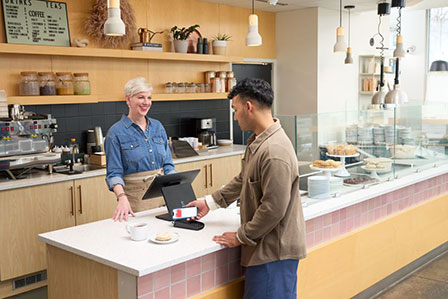
How to choose the best credit card with travel perks
3 min read

Tips to maximize credit card rewards for holiday shopping
4 min read

How to choose the best restaurant and dining credit card for you
5 min read
Rewards & Benefits
The basic premise of a rewards card is simple. Use the card to make purchases, accumulate reward points or cash back, and redeem those points for a benefit you get to enjoy. But a few tips can take you from merely earning rewards to truly maximizing the financial benefit of being a rewards credit card holder. In this article, we’ll explore the top tips to make the most of rewards, from choosing the right card to strategic spending.
Rewards credit cards are an easy way to benefit from everyday purchases. Depending on your card, you can earn points to put toward travel upgrades, gift cards to spend at your favorite retailers or cash back to pay your balance or increase savings in the bank. The following tips can help you maximize your rewards to earn more and do so more effectively.
There are several options when it comes to rewards credit cards, with the most common being cash back cards, travel rewards cards, and cards with accumulated points. But the details of the rewards system can vary significantly from card to card.
With a cash back card , the purchases you make translate directly into a dollar value. Your card may convert that reward into a credit on your next card statement or even direct deposit the cash you’ve earned into your checking account.
The way you earn cash back usually fits into one of two systems:
In addition to cash back credit cards, travel rewards are extremely popular. You earn points for purchases made with a travel rewards card and can redeem them for:
Similar to cash back cards, travel rewards cards may let you earn more points in targeted categories. The U.S. Bank Altitude® Connect Visa Signature® Card allows you to earn points on prepaid hotels and car rentals if you book using the card. You can also get points on travel, gas and EV charging stations on your first $1,000 each quarter.
If you’re an avid traveler, there are typically travel benefits attached to these cards, such as foreign exchange fees and TSA pre-check reimbursement.
Some cards offer points as a reward for using them to make everyday purchases. The U.S. Bank Altitude® Go Visa Signature® Card, for example, offers points on every single purchase, plus extra bonus points for certain types of transactions, like dining, groceries, streaming services, and gas stations. Once accumulated, points can be redeemed for a variety of items, including gift cards and cash back. To see how many points you might be able to earn with a rewards credit card, try using a rewards calculator.
As you consider which rewards credit card makes sense, think about your lifestyle. For instance, if you frequently charge groceries and gas, look for a rewards card that gives you extra points in those categories. If you’re a regular traveler, consider how a travel rewards card might help enhance your upcoming adventures.
Certain cards that offer an abundance of rewards may have a nominal annual fee. Before you apply for a card, make sure the benefits you’ll receive outweigh the cost. Otherwise, look for rewards credit cards with no annual fee.
As you review potential rewards credit cards, ask questions to understand how the rewards system works. Be sure to find out:
• What’s the value exchange for your points?
• Do you need to spend a minimum amount before earning the best rewards?
• Are there limits to the points you can earn?
• Is there a one-time bonus for spending a certain amount within the first few months?
As with any major financial decision, be sure to read the fine print before accepting any credit card offer.
The U.S. Bank Altitude card’s points don’t expire, but other cards may have an expiration date and take back points you earned if you stop using your card for a period of time
When you consider your different options, read the fine print about whether there’s an expiration date on points, as not all cards have the same policy
With certain cards, like the U.S. Bank Cash+® Visa Signature® card, you can choose your rewards categories each quarter to maximize your earnings on everyday purchases. Regularly updating your targeted rewards to align with your spending habits may help you increase the rewards you receive for the same purchases.
Having multiple rewards cards in your wallet can help maximize earning potential if you use them wisely. Two or more cards can earn you higher rewards than just one, but it may help to plan ahead which cards you’ll use for which purpose. That way, you’ll be ready to pay and earn the highest rewards next time you’re standing in the grocery checkout line.
Many people focus on the most common types of rewards. However, many credit cards have other perks you may not know about. You can get the most out of your card by understanding its other benefits, which may include:
• Access to airport lounges
• Travel insurance, like travel accident insurance or emergency assistance
• Lost luggage reimbursement
• Auto rental coverage
• Purchase security
Maximizing credit card rewards is easier than it seems. Choose a card that fits your spending use it strategically, and take advantage of all the benefits it offers. From earning points or cash back to enjoying extras like travel insurance or purchase protection, the right rewards card can turn everyday spending into meaningful benefits
When used consistently, the right rewards credit card can help you build your credit and maximize the financial impact over time.
Table of Contents

3 min read

4 min read

5 min read